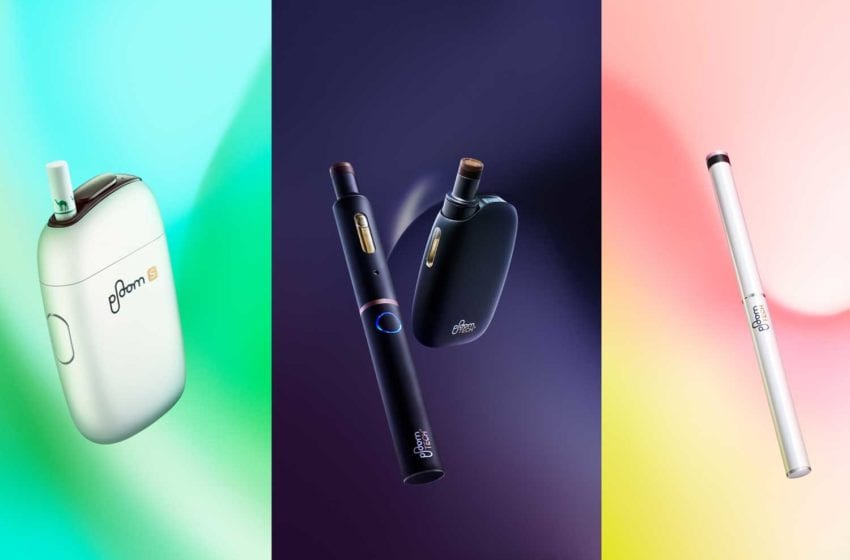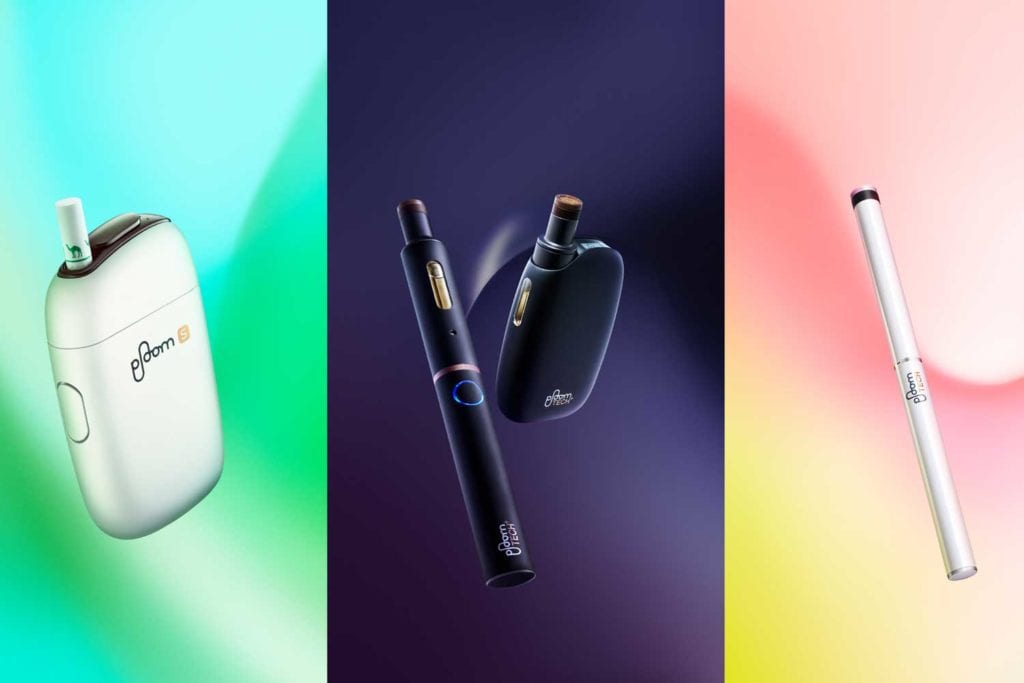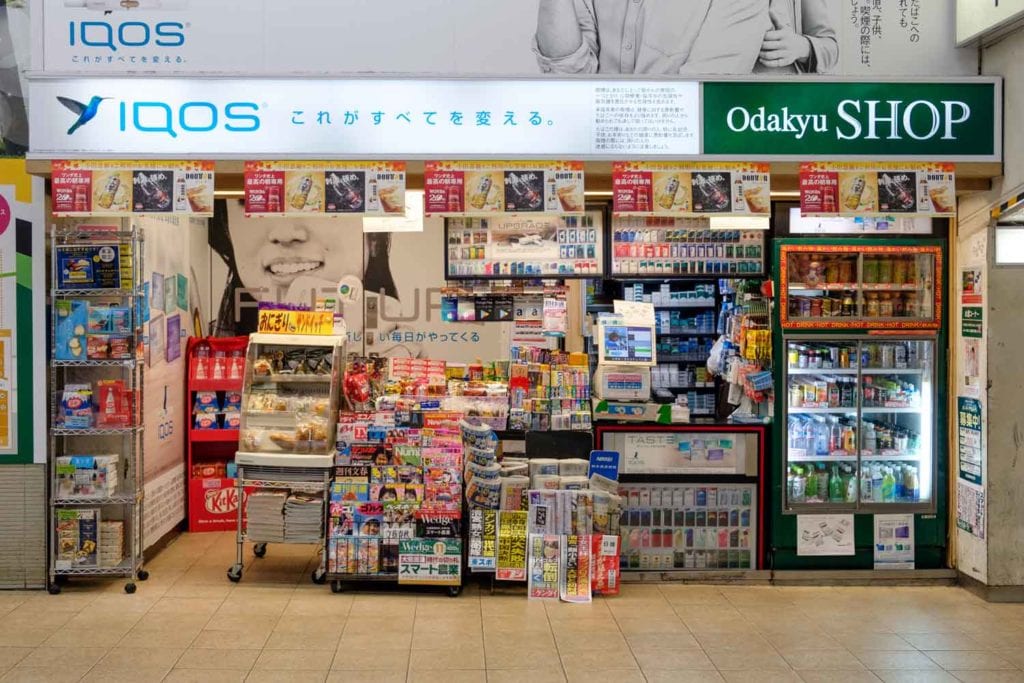Heating Up
- Also in TR Markets Print Edition
- July 1, 2021
- 0
- 0
- 12 minutes read


Massive growth in Japan’s tobacco heating products market has helped push cigarette sales to historic lows.
By Timothy S. Donahue
Japan is the world’s largest market for heated-tobacco products (HTPs). Brands like Philip Morris International’s IQOS, Japan Tobacco’s Ploom and BAT’s Glo have garnered a significant share at the expense of their combustible counterparts.
In the first quarter of 2021, domestic cigarette sales in Japan totaled about 25 billion sticks. In 2016, during the same period, Japanese smokers bought 43.6 billion cigarettes. Over the past five years, cigarette sales have declined nearly 43 percent, according to Euromonitor International.
Since the introduction of IQOS in Japan in 2014 as part of a trial, the annual cigarette volume decline has accelerated beyond its historical trend of 3 percent to 4 percent. Last year, sales dropped 4.2 percent; in the first quarter of 2021, they fell by another 6.5 percent in the first quarter, according to Pieter Vorster, managing director at Idwala Research. HTPs have continued to grow and held a 30 percent share of the total market in the first quarter of 2021, he said. This is up from 26 percent in 2020 overall and 28 percent in the fourth quarter of 2020.
In an interview with Nikkei, Japan’s economic newspaper, Jacek Olczak, who took over as PMI’s CEO on May 5, predicted that Japan will become a smoke-free society within 10 years. PMI expects to gradually pull out of combustible tobacco products globally in the next 10 years to 15 years, and Olczak said he wants the transition to happen first in Japan.
Following its successful trial in 2014, PMI began selling its IQOS device nationwide in Japan in 2016. The company held a 70 percent share of Japan’s market for HTPs in 2019, according to Euromonitor International, while JT held 10 percent and BAT held 20 percent. In June, BAT stated that its reduced-risk products had gained share in all key markets, including the United States and Japan, with the company adding 1.4 million new customers in the first quarter.

The Japanese reduced-risk tobacco product market is unique in that nicotine vaping products are banned whereas HTPs have been embraced, according to Vorster. Consumers who take up HTPs also tend to switch completely from combustibles faster than they do with e-cigarettes, where prolonged dual use is not uncommon.
“The net result of this is the direct substitution effect that we have seen in Japan since 2017, when IQOS first started making headway in the market. For Japan Tobacco, it has been problematic because, as the largest cigarette producer, it has lost the most volume to HTP,” said Vorster.
Japan’s Pharmaceutical Affairs Law classifies nicotine-containing liquids as drugs and liquid-inhaling devices that contain nicotine as medical devices, according to Dinesh Babu Thotakura, general manager of JT’s Media & Investor Relations Division. “Therefore, vaping products sold in Japan are nicotine-free. Currently, we do not have plans to launch vaping products in Japan.”
Nicotine-containing e-cigarettes are regulated by the Japanese Ministry of Health Labor and Welfare, according to Vorster. “Private importation is allowed, provided it is for personal use only and amounts to less than one month’s supply,” he said. “HTP, on the other hand, is classified as a tobacco product and therefore regulated by the Ministry of Finance.”
While part of the success of HTPs is due to Japan’s ban on e-cigarette sales, the country’s comparatively accommodative regulatory framework has made an impact as well, according to Thotakura. Last year, when Japan restricted smoking in restaurants, it made an exception for HTPs, which can be consumed in bars and restaurants if certain conditions, such as having ventilation equipment in place, are met.
“The Japanese [combustible cigarette] market had been declining historically even before the introduction of HTPs; however, the introduction of HTPs has accelerated that decline,” said Thotakura. “Although we are aware that the number of cigarette smokers in Japan is on a downward trend due to a combination of factors, including tighter regulations, aging population and increased health awareness, our Ploom series of HTPs are gaining popularity among consumers who are especially conscious of their surrounding environment.”
When asked if there is room in Japan for another HTP product besides the Big Three, Vorster said it is hard to see the status quo changing meaningfully. “For either BAT or JT or a new entrant to make meaningful inroads, they would need to offer a product that provides consumers with a superior sensorial and nicotine-delivery experience compared to IQOS,” he said. “A product that can deliver an experience closer to a cigarette stands to gain meaningful category share and expand the category to those smokers who have not been prepared to switch to currently available products.”

For either BAT or JT or a new entrant to make meaningful inroads, they would need to offer a product that provides consumers with a superior sensorial and nicotine-delivery experience compared to IQOS.
Another challenge to the continued growth of HTPs is the World Health Organization’s opposition to tobacco harm reduction. In 2004, Japan joined the WHO Framework Convention on Tobacco Control (FCTC). The treaty’s guidelines are intended to assist parties in fulfilling their obligations under the Convention and are not legally binding to impose new obligations on the parties, according to Thotakura.
“Although we cannot speak on behalf of the Japanese government on the country’s stance in its involvement with the WHO and FCTC, the JT Group’s fundament lies on the belief that the use of tobacco products entails health risks and that appropriate regulations are necessary from the perspective of preventing underage smoking,” said Thotakura. “We believe that regulations in the Japanese market have already been evaluated and implemented appropriately by the relevant authorities, taking into account the environment surrounding tobacco in Japan. We will continue to operate our business in an appropriate manner in accordance with the laws and regulations of Japan and other countries/regions.”
Vorster believes that Japan’s involvement in the FCTC will have little to no impact. “Overall, the Japanese government has been slow to introduce smoking restrictions, and I suspect it is unlikely that it will change its view on HTPs because it is a signatory to the FCTC,” he said.
When asked why Japan’s success in reducing combustible use through HTPs is not viewed as a “success story” by other countries, Vorster said that few countries have embraced the principle of harm reduction when it comes to tobacco, partly because the WHO advocates abstinence. Governments, he says, are often forced to find a balance between WHO recommendations and what actually works.
“Governments can only create a regulatory and tax framework conducive to reduced-harm products being accessible and affordable and provide smokers with accurate information about the relative risks posed by these products,” said Vorster. “Consumers will ultimately decide whether they want to switch and which products they will use. The U.K. is about the only market I can think of where this is the case. When HTPs were introduced into the U.K., there was already a large and established e-vapor category, and thus far, it [the HTP sector] has had limited traction with consumers.”
Appreciating consumers’ diversifying needs, JT aspires to offer them an even greater choice of products by focusing on quality, innovation and the reduced-risk potential of products, according to Thotakura. “We believe that the options for tobacco products should not be limited to a specific category or product, but rather, it is important for consumers to have the freedom of choice to choose the most suitable product according to their preferences, living environment and life-stage transitions,” he said.

PMI is expected to launch its next generation of its IQOS, ILUMA, before the end of the year. The innovative device is supposed to play a major role in the company’s transformation, according to Olczak. “IQOS ILUMA is simple and intuitive,” explained Olczak. “It self-activates and requires less explanation, which will save time and cost of acquisition as well as aftercare and retention. It supports easier switching and higher conversion for legal-age smokers.”
PMI Chief Financial Officer Emmanuel Babeau expects consumers to embrace ILUMA. Because the product is more intuitive and easier to use than previous IQOS iterations, PMI may be able to convert smokers whom it had not been able to convert before, he said during a call with investors. “We’re going to also have a number of IQOS users or other [HTP] users switching to ILUMA because it’s really a … product with a lot of benefit for the consumer.”
JT, meanwhile, intends to continue improving consumers’ user experience through the evolution of the HTP category, and not just with hardware. JT also plans to expand its flavor portfolio to meet consumers’ diverse preferences.
JT is the parent company of Japan Tobacco International. JT directly manages the Japanese-domestic tobacco business while JTI directly manages the international tobacco business. Currently, operations and resources are distributed between these two organizations. In recent years, JT’s and JTI’s R&D functions have been cooperating to develop next-generation HTP products with the goal of introducing and expanding these products on a global scale, according to Thotakura.
In the second half of 2021, the company intends to launch Ploom X—first in Japan, then in Russia and other markets.
Starting in 2022, the JT Group will combine its Japanese and international operations into a single business. “We will utilize the entire JT Group’s resources to provide products and services that exceed the needs and expectations of consumers,” said Thotakura.
There is no denying the role HTPs have played in reducing the number of combustible cigarette smokers in Japan. Vorster said the world should take notice. “Japan has been a showcase for many years now of reducing the harm caused by combustible cigarettes,” he said. “Whilst the category’s growth will likely slow without the introduction of more satisfying products, there is no evidence of that yet.”

